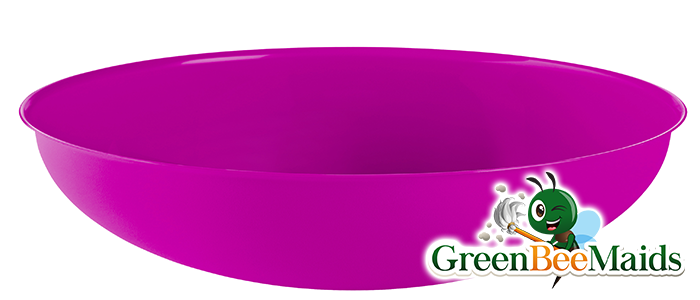How Do You Clean Plastic?
Since its invention over a hundred years ago in 1907, plastic has been indispensable. People have been using cheap, flexible, useful stuff for decades. They’ve been fighting about the best ways to clean it for just as long, too. Some things work, and some things only kind of work. For example, putting it in the dishwasher won’t remove stains and leaves everything damp. No matter how much you scrub that Tupperware, there’s still a stain in the bottom…
Why is it so Hard to Clean Plastic?
Plastic is a bit deceptive. To you, it might look like it’s made of glass, a uniform, flat surface. The truth is more complicated. If you look at plastic under a microscope, you see a different picture. Even the smoothest plastic is a tangle of folds, bumps, ridges… Some kinds of plastic even resemble a sponge more than a pane of glass from up close. Water, food particles, and even bacteria have many places to hide. As a result, some people think you can never really clean plastic… But we’re here to tell you that isn’t the case.
Some Things to Know
First, it’s important to put to rest some important myths. Yes, bacteria may, in theory, be able to survive in a little nick on that plastic cutting board. That said, the kinds of bacteria that will make you sick tend to only live for a few hours on surfaces. They’re also killed by the hot soapy water you use to wash dishes. So next time you use your cutting board, it’s probably safe if cleaned well.
Second, don’t go overboard on scrubbing. Because plastic is soft, that extra scrubbing adds tiny new scratches. This creates more places for stains to stick, and it’ll make you scrub harder next time. It’s a vicious cycle.
Plastics and Heat
Lastly, there’s a persisting fear about hot water and plastic. People worry that hot water causes it to release harmful chemicals. The concern first arose over BPA, which many manufacturers have stopped using. However, as the FDA continues to investigate the effect of plastics on our health, there are things to be mindful of.
In 2018, the American Academy of Pediatricians advised avoiding certain plastics. These are recycling codes 3 (phthalates), 6 (styrene), and 7 (bisphenols). This leaves two prevailing schools of thought: Hand washing and dishwasher use.
How to Clean Plastics
To clean by hand, solid dish soap is your best bet. Dish brushes are good for avoiding scratches. Don’t use steel wool, no matter what you do. For small spots, soft nylon brushes help a lot. You can use a 1:1 mix of distilled white vinegar and water in a spray bottle to disinfect and pretreat plastics. So how do you clean plastic in the dishwasher?
Always put it on top. This keeps it away from heat and prevents melting and degradation. Avoid crowding the rack, and place it as close to the middle as you can. Angle it so the water drains, which will help it dry.
How to Clean Stained Plastic
That same 1:1 mixture of water and vinegar works well as a stain soak. Soak it until the stain is gone – Usually overnight – And then wash clean like normal. To avoid stains, don’t mix your plastic with heat. Use it for storage only – Before reheating those leftovers, put them in a regular bowl. It’ll do much better in the microwave than even the toughest plastic.
How do you clean it? Importantly, avoid stains and over–scrubbing. Treat it like any normal piece of dishware, and avoid reheating in plastic containers. If you need more tips on safe plastic cleaning, consult us at Green Be Maids.

